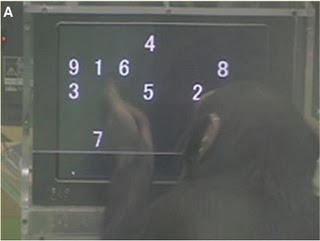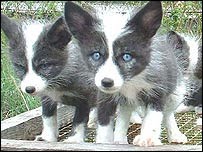A new study has been published in Current Biology which offers evidence to suggest that monkeys have the capacity for both recognition and recall of simple shapes.
The study showed that rhesus monkeys can recall shapes from memory. This was shown using an experiment which had the monkeys reproduce shapes on a computer touch screen. These findings suggest that the memory of humans and old world monkeys may be more similar than we previously suspected.
Recall is separate and special in comparison to recognition as it shows an ability to remember and visualise things which are not present in the moment. This is an ability which is implicated in skills such as planning and imagining. This is also thought to enhance things like navigation and social behavior. In the past it has thought that an ability to recall none present items is dependent on language. This has been suggested in the past by prominent linguists such as Charles Hockett who thought that the ability of displacement was facilitated by language and was a driving force behind its evolution.
Because of a lack of demand for recall in the lives of monkeys they will not use their recollection skills very often in the wild. In the press release, Benjamin Basile, who lead the study said:
“Maybe it’s often just easier to recognize the monkey, the food, or the landmark in front of you. What we do know is that they do seem to have the ability to recall information in the lab.”
Experiments with humans have shown that recall and recognition require different types of memory. This has been difficult to show with other primates as recall tests are difficult to devise for monkeys because they can’t draw or talk.
The experiment used five rhesus monkeys who were trained on a recall test in which they had to reproduce a simple figure on a touch screen from memory. The shapes were made up of large pixels or boxes on a screen. The monkeys were shown these shapes and then, after a delay, were presented with part of the shape in a different location. The monkeys had to replicate the rest of the shape by touching where the other pixels should be.
The monkeys remembered less in recall than in recognition tests which is the same case in humans. However, the recall performance deteriorated more slowly over time. The monkeys were also able to transfer their ability to recall shapes to novel shapes as they were shown to be able to recall shapes which weren’t used in training.
This ability has probably been present since our last common ancestor with old world monkeys some 30 million years ago and is probably not facilitated by language.
The study hypothesises that:
“Recollection and familiarity likely evolved because they solved functionally incompatible problems. For example, familiarity does not support detailed memory for context, but it is quick and resistant to distraction. Recollection is slower and more vulnerable to distraction but supports a more detailed and flexible use of memory. Familiarity might better allow rapid responses to foods and predators under distracting conditions, whereas recollection might be necessary to access knowledge of distant food locations or past social interactions for planning future behavior.”
References




